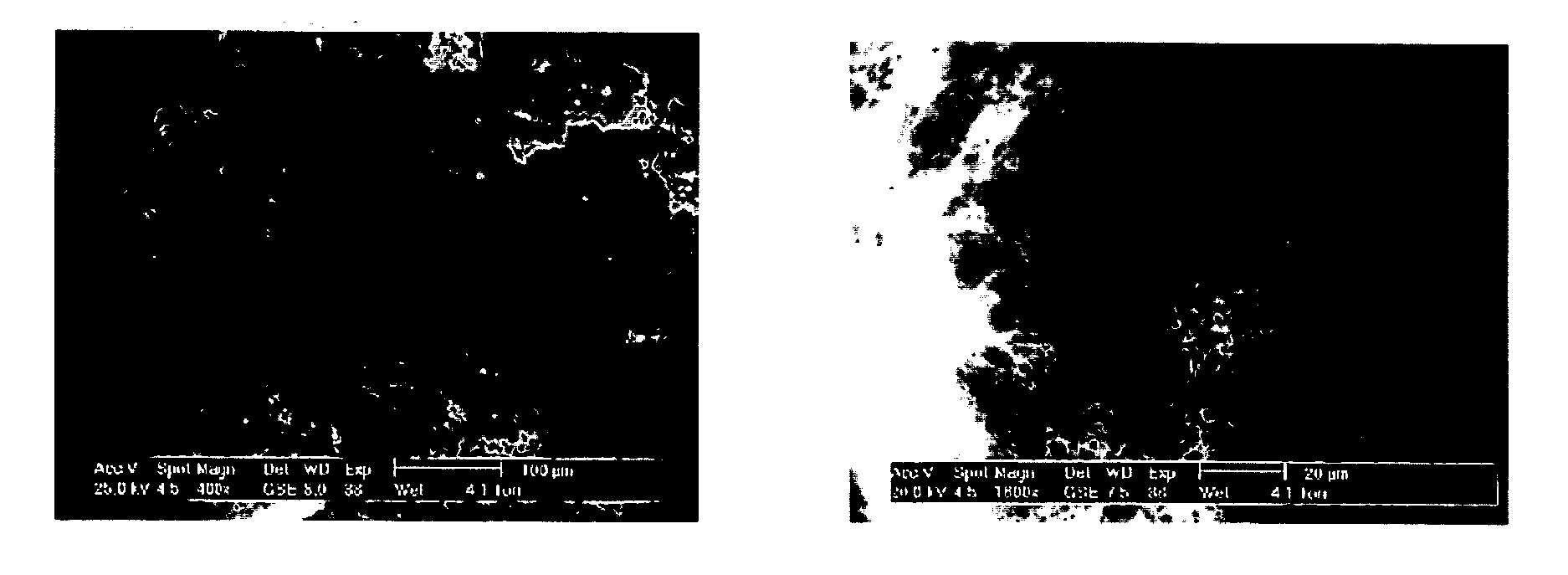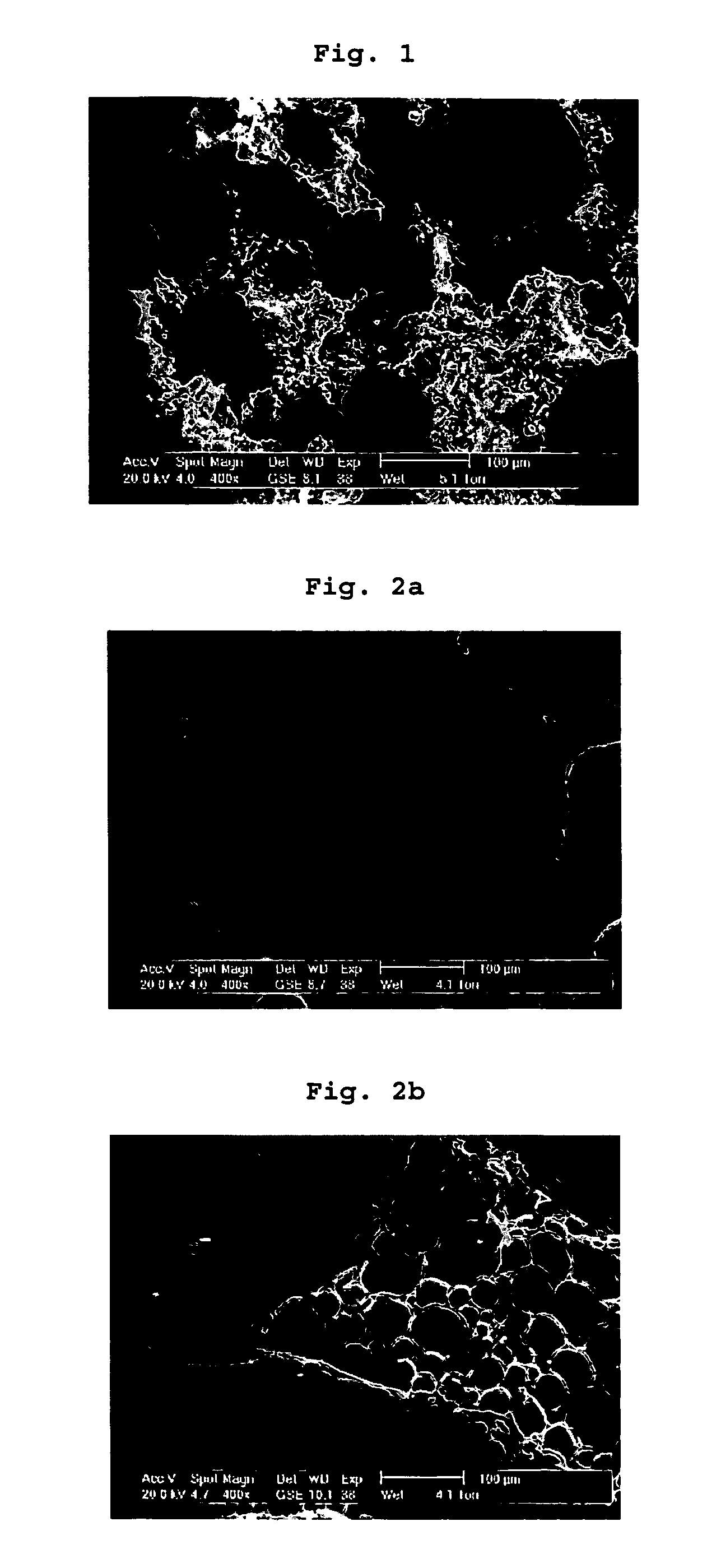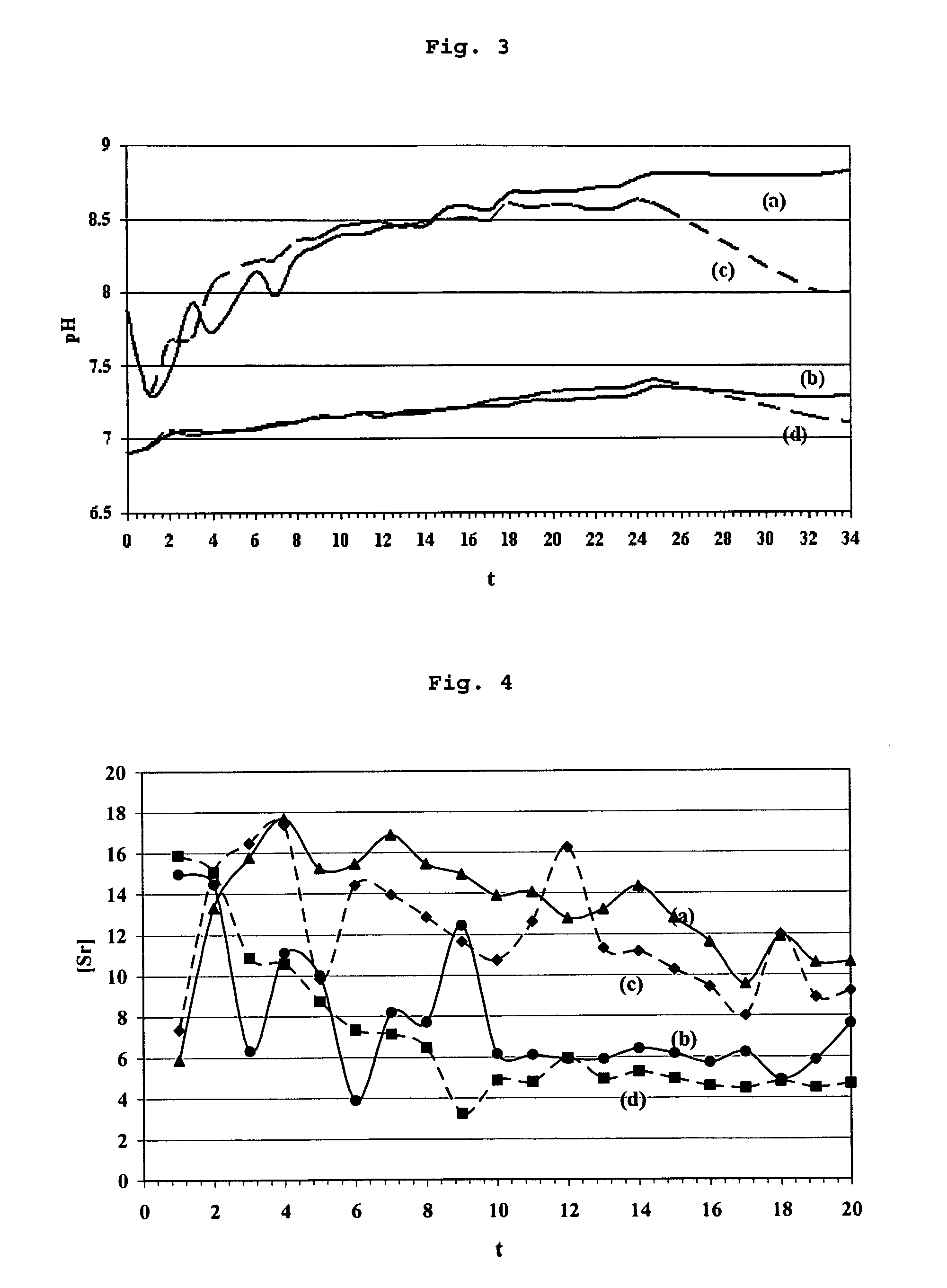Composition for Injectable Cement Useful as Bone Replacement
a technology of injectable cement and bone replacement, which is applied in the direction of prosthesis, osteosynthesis devices, impression caps, etc., can solve the problems of reducing the resorption rate of cement, so as to achieve good compressive strength and high resorption rate
- Summary
- Abstract
- Description
- Claims
- Application Information
AI Technical Summary
Benefits of technology
Problems solved by technology
Method used
Image
Examples
example 1
Injectable Cement without Polymer Microbeads
[0052] A powder mixture was prepared which has the following molar composition: 6 DCPD, 2.5 CaO, 1.5 SrCO3.
[0053] The following were prepared: [0054] an aqueous solution of the NaP buffer type having the composition NaH2PO4+Na2HPO4·12H2O (0.75M) and a pH of 7; [0055] an aqueous solution of the NaGP buffer type having the composition NaH2PO4+Na2PO4C3H7O2·6H2O (0.75M) and a pH of 6.6; [0056] an aqueous solution of the NH4P buffer type having the composition NH4H2PO4+(NH4)2HPO4 (0.75M) and a pH of 6.65.
[0057] Two compositions for cement were prepared with each of the buffer solutions by mixing the solution and the powder in a liquid phase / mineral solid phase L / P ratio (in ml / g) of 0.5 and 0.6.
[0058] The characteristics of the compositions obtained are given in table I below.
TABLE 1Sample1A1B1C1D1ELiquid phaseNaPNaPNaGPNaGPNH4PL / P0.50.60.50.60.5Compressive strength (MPa)21.0 ± 2.817.6 ± 1.8 19.5 ± 2.317.6 ± 3.218.0 ± 0.5Diametral compres...
example 2
Preparation of PLAGA Microbeads
[0060] Use was made of an intrinsically amorphous PLA37.5GA25 polymer theoretically composed of 37.5% of L-lactic units and 25% of glycolic units. Said polymer has a glass transition temperature of 49° C., a storage modulus E′≈3.5 GPa, a loss modulus E″≈120 MPa and a loss angle δ≈2.0° (at T=37° C. and F=500 Hz). The 1H NMR spectra give an overall composition of PLA36.8GA26.4. Gel permeation chromatography gives a single peak corresponding to a molar mass Mw of 111 100 with a distribution Mw / Mn=1.9.
[0061] 4 g of said polymer were dissolved in 50 ml of dichloromethane and the solution thus obtained was added, with mechanical stirring of 900 rpm, to 1 1 of an aqueous solution comprising 5 g of poly(vinyl alcohol) (PVA). Stirring was maintained at ambient temperature for 4 h and then the spheres formed were recovered by filtration on a sintered glass funnel (porosity 3), washed with distilled water and then dried on a Büchner. After leaving overnight in...
example 3
Cement Composition with Polymer Microbeads for Different Proportions of Polymer
[0062] The procedure of example 1 corresponding to the samples 1A and 1C was repeated but while replacing a portion of the mineral solid phase “6 DCPD, 2.5 CaO, 1.5 SrCO3” with a polymer in the form of S2 microspheres of example 2. In each case, three tests were carried out while varying the amount of polymer. It was found that a polymer / mineral phase ratio by weight of 40% is sufficient for the microspheres to be in contact, that is to say to obtain interconnected macroporosities after degradation of the polymer.
[0063] The microspheres were incorporated in the phosphate powder and then the mixture was incorporated in the liquid phase.
[0064] The compressive strength was determined for the compositions obtained respectively with NaP and with NaGP and 40% of S2 polymer microspheres and was compared with that of the equivalent composition without microspheres. The results are given in table 2 below. In al...
PUM
 Login to View More
Login to View More Abstract
Description
Claims
Application Information
 Login to View More
Login to View More - R&D
- Intellectual Property
- Life Sciences
- Materials
- Tech Scout
- Unparalleled Data Quality
- Higher Quality Content
- 60% Fewer Hallucinations
Browse by: Latest US Patents, China's latest patents, Technical Efficacy Thesaurus, Application Domain, Technology Topic, Popular Technical Reports.
© 2025 PatSnap. All rights reserved.Legal|Privacy policy|Modern Slavery Act Transparency Statement|Sitemap|About US| Contact US: help@patsnap.com



